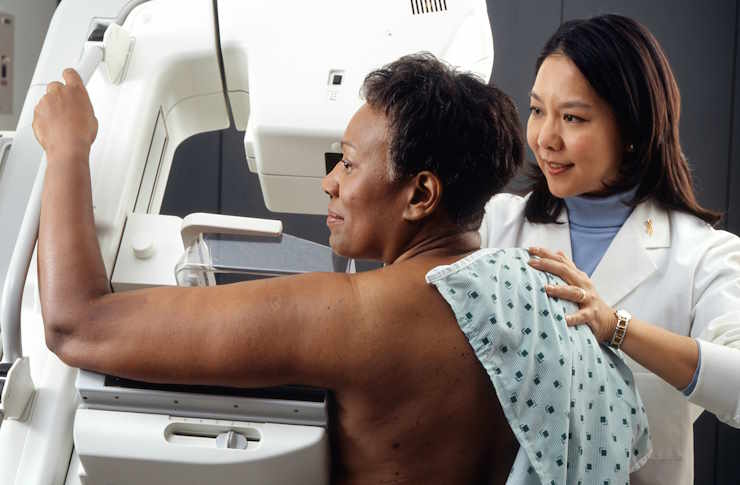Triple Negative Breast Cancer: Key Symptoms and Warning Signs
Triple negative breast cancer (TNBC) represents approximately 10-15% of all breast cancers and requires special attention due to its aggressive nature and limited treatment options. Understanding the early warning signs and risk factors can significantly improve outcomes through timely intervention. This comprehensive guide explores the critical symptoms, detection methods, and risk factors everyone should know.

Triple negative breast cancer (TNBC) is a distinct subtype of breast cancer characterized by the absence of estrogen receptors, progesterone receptors, and HER2 protein. This classification makes it particularly challenging to treat, as it doesn’t respond to hormone therapies or HER2-targeted treatments that are effective for other breast cancer types. Early detection becomes even more crucial for TNBC, as prompt intervention can significantly improve prognosis and treatment outcomes.
What Are the Primary Symptoms of Triple Negative Breast Cancer?
Triple negative breast cancer often presents with symptoms similar to other breast cancer types, though it frequently develops more rapidly. The most common physical signs include:
- A new lump or mass in the breast that feels hard, painless, and has irregular edges
- Changes in the size, shape, or appearance of the breast
- Skin changes on the breast, including dimpling, redness, or thickening
- Nipple changes such as inversion, discharge, or scaling
- Persistent pain in one area of the breast
- Swelling of all or part of the breast, even without a detectable lump
TNBC tends to grow more quickly than other forms of breast cancer, so changes may become noticeable over weeks rather than months. Additionally, TNBC is more likely to present as an interval cancer—appearing between regular screening mammograms—making awareness of physical symptoms particularly important.
How Can Triple Negative Breast Cancer Be Detected Early?
Early detection of triple negative breast cancer significantly improves treatment outcomes. Several screening and diagnostic approaches can help identify TNBC before it advances:
- Regular breast self-examinations to identify any changes
- Clinical breast examinations performed by healthcare providers
- Mammography screening according to age-appropriate guidelines
- Additional imaging such as breast ultrasound or MRI for high-risk individuals
- Genetic testing for those with family history of breast cancer or BRCA mutations
For women with dense breast tissue, which can make mammograms less effective, supplemental screening with ultrasound or MRI may be recommended. Studies indicate that TNBC can sometimes be more difficult to detect on mammograms compared to other breast cancer types, making a multi-modal approach to screening particularly valuable for at-risk individuals.
What Risk Factors Are Associated with Triple Negative Breast Cancer?
While anyone can develop triple negative breast cancer, certain factors are associated with increased risk. Understanding these risk factors can help identify individuals who may benefit from enhanced screening protocols:
- Age: TNBC is more common in women under 40 years of age
- Genetics: BRCA1 gene mutations significantly increase risk (approximately 70% of breast cancers in women with BRCA1 mutations are triple negative)
- Ethnicity: Higher prevalence among African American and Hispanic women
- Family history: First-degree relatives with breast cancer, particularly TNBC
- Previous radiation exposure to the chest area
- Lack of breastfeeding history or shorter duration of breastfeeding
- Higher body mass index, particularly in younger women
Research suggests that unlike some other breast cancer subtypes, hormonal factors such as age at first pregnancy or use of oral contraceptives appear to have less influence on TNBC risk. The strong association with BRCA1 mutations makes genetic counseling particularly important for those with family history of breast or ovarian cancer.
How Does Triple Negative Breast Cancer Differ in Its Progression?
Triple negative breast cancer has distinct progression patterns compared to other breast cancer subtypes. Understanding these differences helps explain why early detection is particularly crucial:
- Faster growth rate: TNBC typically has a higher proliferation rate than other subtypes
- Earlier peak recurrence: Risk of recurrence is highest within the first three years after treatment
- Different metastatic patterns: More likely to spread to visceral organs (especially lungs and brain) rather than bones
- Shorter interval between recurrence and death compared to other subtypes
These progression characteristics underscore the importance of prompt diagnosis and aggressive treatment approaches. The window for early intervention may be narrower with TNBC, making symptom awareness and regular screening particularly valuable.
What Diagnostic Challenges Exist for Triple Negative Breast Cancer?
Diagnosing triple negative breast cancer presents several unique challenges that can impact early detection:
- Imaging limitations: TNBC may present as a round or oval mass that can resemble a benign finding on mammography
- Younger age at diagnosis: Often occurs before regular screening mammography begins
- Rapid growth: May develop between scheduled screening appointments
- Absence of calcifications: Less likely to show the calcifications often associated with other breast cancers
- Dense breast tissue: More common in younger women, making detection more difficult
These diagnostic challenges highlight the importance of a comprehensive approach to breast health that includes awareness of physical symptoms, appropriate screening based on risk factors, and prompt investigation of any breast changes regardless of age.
Treatment Approaches for Triple Negative Breast Cancer
While treatment options for TNBC are more limited than for other breast cancer subtypes, several effective approaches exist:
- Surgery: Lumpectomy or mastectomy depending on cancer size and other factors
- Chemotherapy: Often used before surgery (neoadjuvant) or after (adjuvant)
- Radiation therapy: Typically recommended after breast-conserving surgery
- Immunotherapy: Recently approved for some TNBC cases with specific genetic features
- PARP inhibitors: Effective for patients with BRCA mutations
- Clinical trials: Access to emerging therapies including antibody-drug conjugates
Research in TNBC treatment is advancing rapidly, with promising developments in targeted therapies based on molecular profiling of tumors. Patients diagnosed with TNBC should discuss the latest treatment options with their healthcare team and consider participation in clinical trials when appropriate.
This article is for informational purposes only and should not be considered medical advice. Please consult a qualified healthcare professional for personalized guidance and treatment.



